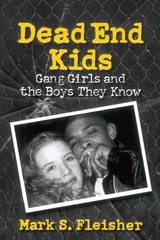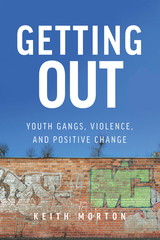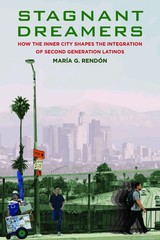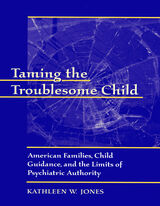
Part love letter to Appalachia, part rigorous social critique, readers may find 12 Rounds in Lo’s Gym—and its narrative of individual and community strength in the face of globalism’s headwinds—a welcome corrective to popular narratives that blame those in the region for their troubles.


Featuring articles by leading American and European scholars from many fields, Youth Violence provides a reliable, up-to-date, authoritative and comprehensive overview of policy issues and research developments concerning crime and violence among the young.

Dead End Kids exposes both the depravity and the humanity in gang life through the eyes of a teenaged girl named Cara, a member of a Kansas City gang. In this shocking yet compassionate account, Mark Fleisher shows how gang girls’ lives are shaped by poverty, family disorganization, and parental neglect.


Seventy deeply troubled teenagers spend weeks, months, even years on a locked psychiatric ward. They’re not just failing in school, not just using drugs. They are out of control—violent or suicidal, in trouble with the law, unpredictable, and dangerous. Their futures are at risk.
Twenty years later, most of them still struggle. But astonishingly, a handful are thriving. They’re off drugs and on the right side of the law. They’ve finished school and hold jobs that matter to them. They have close friends and are responsible, loving parents.
What happened? How did some kids stumble out of the woods while others remain lost? Could their strikingly different futures have been predicted back during their teenage struggles? The kids provide the answers in a series of interviews that began during their hospitalizations and ended years later. Even in the early days, the resilient kids had a grasp of how they contributed to their own troubles. They tried to make sense of their experience and they groped toward an understanding of other people’s inner lives.
In their own impatient voices, Out of the Woods portrays edgy teenagers developing into thoughtful, responsible adults. Listening in on interviews through the years, narratives that are often poignant, sometimes dramatic, frequently funny, we hear the kids growing into more composed—yet always recognizable—versions of their tough and feisty selves.

Sounding for Cool is about self-transformation, about growing up on one’s own as a product of contemporary America, and about how to become not just a man, but a contributing adult in society. Donald Morrill presents the day-to-day lives of seven young men (white, black, Hispanic, immigrant, middle-class, thick-headed, poor, and smart), who for various reasons have become homeless. Placed in a Transitional Living Program facility (TLP) by the courts, these men must learn to navigate in the world of “normal” values and reasonable rules. Streetwise and callow, trained to seek shortcuts or to make excuses, they struggle with the structures and assumptions inherent in living a law-abiding, bill-paying life. While sorting out their souls, they learn how to connect with others.
In turn, Sounding for Cool scrutinizes the staff of the TLP, one woman and three men, who variously come to terms with their lives by settling accounts from the past. As a TLP volunteer, Donald Morrill often finds himself bridging the gap between staff and client. In the process of telling their stories, he chronicles his own journey to understand the past. Ultimately, Sounding for Cool asks the enduring questions, “Who am I in the world and what can I become?”

Winner of the 2020 Robert E. Park Award for Best Book from the Community and Urban Sociology Section of the American Sociological Association
Winner of the 2020 Distinguished Contribution to Research Award from the Latino/a Section of the American Sociological Association
Honorable Mention for the 2020 Thomas and Znaniecki Award from the International Migration Section of the American Sociological Association
A quarter of young adults in the U.S. today are the children of immigrants, and Latinos are the largest minority group. In Stagnant Dreamers, sociologist and social policy expert María Rendón follows 42 young men from two high-poverty Los Angeles neighborhoods as they transition into adulthood. Based on in-depth interviews and ethnographic observations with them and their immigrant parents, Stagnant Dreamers describes the challenges they face coming of age in the inner city and accessing higher education and good jobs, and demonstrates how family-based social ties and community institutions can serve as buffers against neighborhood violence, chronic poverty, incarceration, and other negative outcomes.
Neighborhoods in East and South Central Los Angeles were sites of acute gang violence that peaked in the 1990s, shattering any romantic notions of American life held by the immigrant parents. Yet, Rendón finds that their children are generally optimistic about their life chances and determined to make good on their parents’ sacrifices. Most are strongly oriented towards work. But despite high rates of employment, most earn modest wages and rely on kinship networks for labor market connections. Those who made social connections outside of their family and neighborhood contexts, more often found higher quality jobs. However, a middle-class lifestyle remains elusive for most, even for college graduates.
Rendón debunks fears of downward assimilation among second-generation Latinos, noting that most of her subjects were employed and many had gone on to college. She questions the ability of institutions of higher education to fully integrate low-income students of color. She shares the story of one Ivy League college graduate who finds himself working in the same low-wage jobs as his parents and peers who did not attend college. Ironically, students who leave their neighborhoods to pursue higher education are often the most exposed to racism, discrimination, and classism.
Rendón demonstrates the importance of social supports in helping second-generation immigrant youth succeed. To further the integration of second-generation Latinos, she suggests investing in community organizations, combating criminalization of Latino youth, and fully integrating them into higher education institutions. Stagnant Dreamers presents a realistic yet hopeful account of how the Latino second generation is attempting to realize its vision of the American dream.

When our children act up--whether they're just moody and rebellious or taking drugs and committing crimes--our solution, so often now, is to send them to a psychiatrist or developmental psychologist for help. What makes us think this will work? How did we come to rely on psychological explanations--and corrections--for juvenile misconduct?
In Taming the Troublesome Child, these questions lead to the complex history of "child guidance," a specialized psychological service developed early in the twentieth century. Kathleen Jones puts this professional history into the context of the larger culture of age, class, and gender conflict. Using the records of Boston's Judge Baker Guidance Center from 1920 to 1945, she looks at the relationships among the social activists, doctors, psychologists, social workers, parents, and young people who met in the child guidance clinic, then follows the clinicians as they adapt delinquency work to the problems of nondelinquent children--an adaptation that often entailed a harsh critique of American mothers. Her book reveals the uses to which professionals and patients have put this interpretation of juvenile misbehavior, and the conditions that mother-blaming has imposed on social policy and private child rearing to this day.
READERS
Browse our collection.
PUBLISHERS
See BiblioVault's publisher services.
STUDENT SERVICES
Files for college accessibility offices.
UChicago Accessibility Resources
home | accessibility | search | about | contact us
BiblioVault ® 2001 - 2024
The University of Chicago Press









